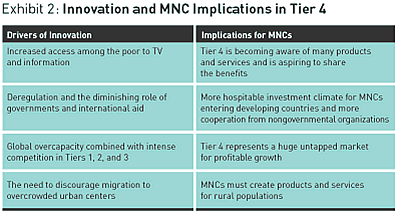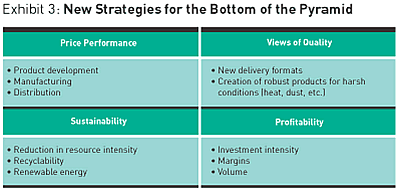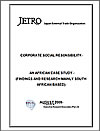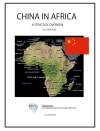BOP Report(Bottom of the Pyramid)
All data are collected in the Fiscal Year of 2008-2009.
4. The Invisible Opportunity
Among the top 200 MNCs in the world, the overwhelming majority are based in developed countries. U.S. corporations dominate, with 82; Japanese firms, with 41, are second, according to a list compiled in December 2000 by the Washington, D.C.–based Institute for Policy Studies.
So it is not surprising that MNCs’ views of business are conditioned by their knowledge of and familiarity with Tier 1 consumers. Perception of market opportunity is a function of the way many managers are socialised to think and the analytical tools they use. Most MNCs automatically dismiss the bottom of the pyramid because they judge the market based on income or selections of products and services appropriate for developed countries.
To appreciate the market potential of Tier 4, MNCs must come to terms with a set of core assumptions and practices that influence their view of developing countries. The following were identified as widely shared orthodoxies that must be re-examined:
Assumption 1: The poor are not our target consumers because with our current cost structures, we cannot profitably compete for that market.
Assumption 2: The poor cannot afford and have no use for the products and services sold in developed markets.
Assumption 3: Only developed markets appreciate and will pay for new technology. The poor can use the previous generation of technology.
Assumption 4: The bottom of the pyramid is not important to the long-term viability of our business. We can leave Tier 4 to governments and nonprofits.
Assumption 5: Managers are not excited by business challenges that have a humanitarian dimension.
Assumption 6: Intellectual excitement is in developed markets. It is hard to find talented managers who want to work at the bottom of the pyramid.
Each of these key assumptions obscures the value at the bottom of the pyramid. It is like the story of the person who finds a $20 bill on the sidewalk. Conventional economic wisdom suggests if the bill really existed, someone would already have picked it up! Like the $20 bill, the bottom of the pyramid defies conventional managerial logic, but that doesn’t mean it isn’t a large and unexplored territory for profitable growth.
Consider the drivers of innovation and opportunities for companies in Tier 4. (Exhibit 2.) MNCs must recognize that this market poses a major new challenge: how to combine low cost, good quality, sustainability, and profitability.

Furthermore, MNCs cannot exploit these new opportunities without radically rethinking how they go to market. Exhibit 3 suggests some (but by no means all) areas where an entirely new perspective is required to create profitable markets in Tier 4.

目次
- 1. Reperceiving Business from the Bottom Up
- 2. Bop in Brief
- 3. Four Consumer Tiers
- 4. The Invisible Opportunity
- 5. Tier 4 Pioneer
- 6. Creating Buying Power
- 7. Shaping Aspirations
- 8. Improving Access
- 9. Tailoring Local Solutions
- 10. Putting It All Together
- 11. A Common Cause
- 12. BOP Experiments in the Field
- 13. A BOP Typology
- 14. What's Next for BOP?
- 15. How to Get Started: The Conceptual Framework for BOP Innovation
- 16. BoP Conferences
- 17. Case Studies and Relevant Reference Material
- Bibliography




